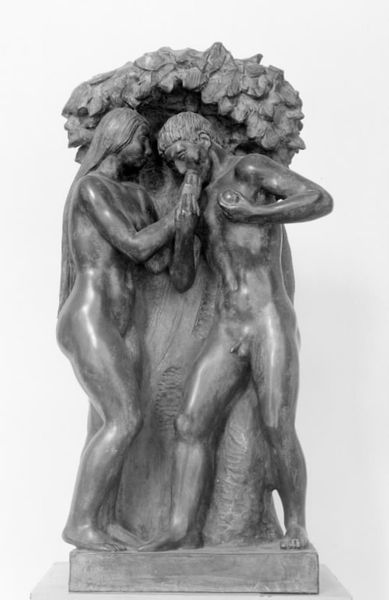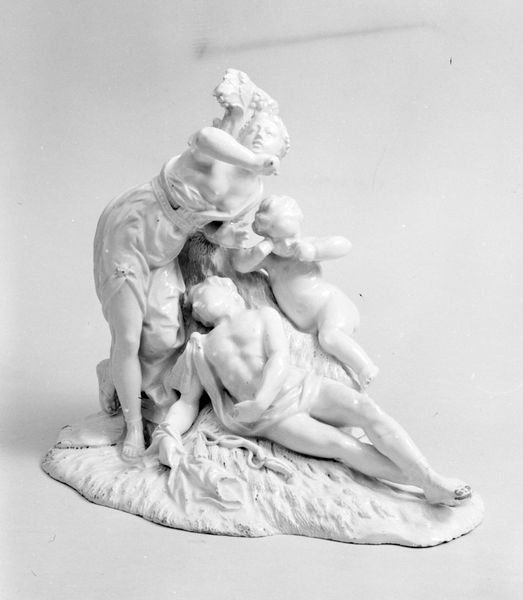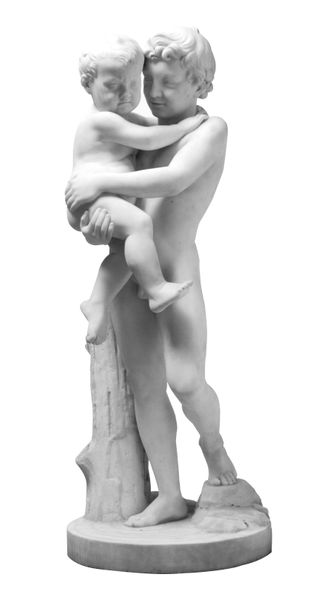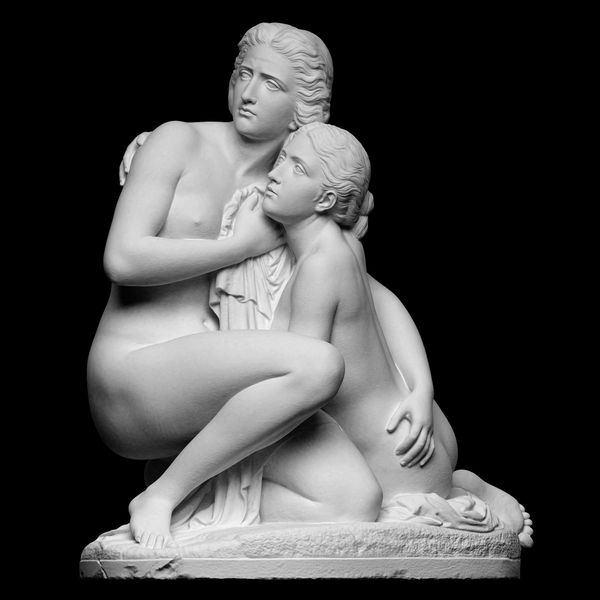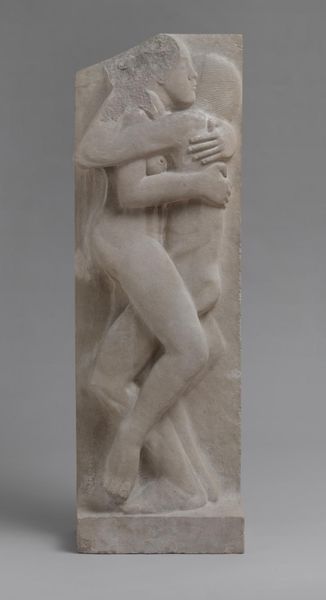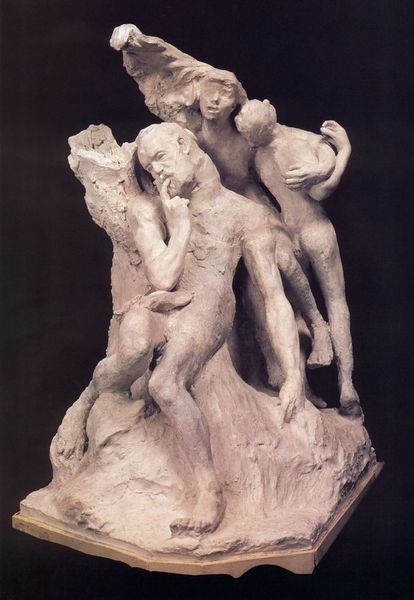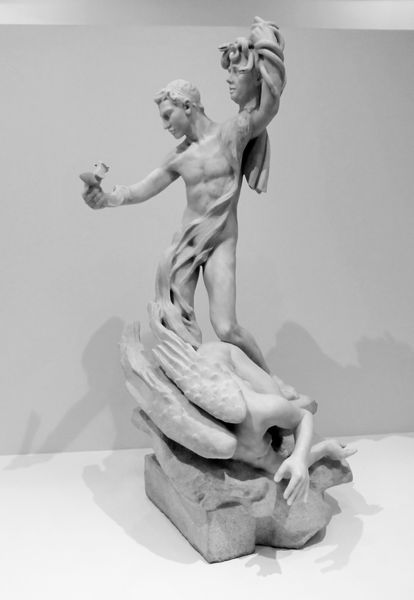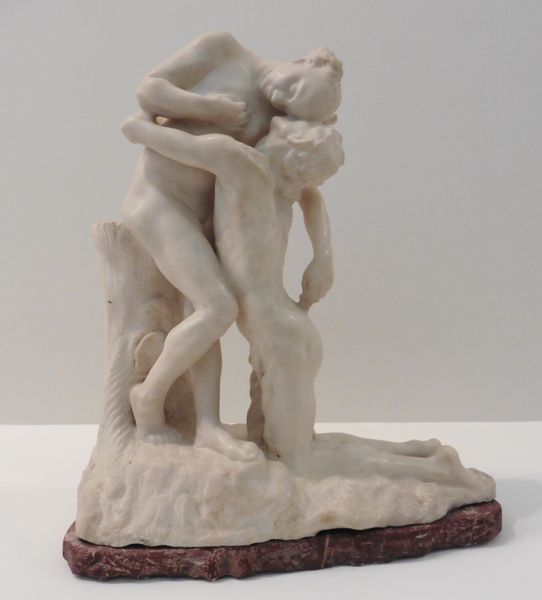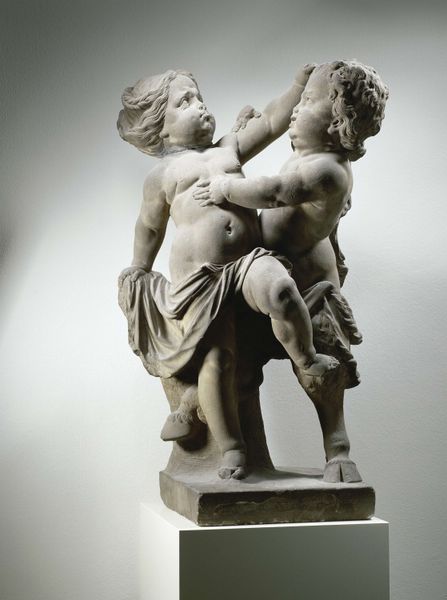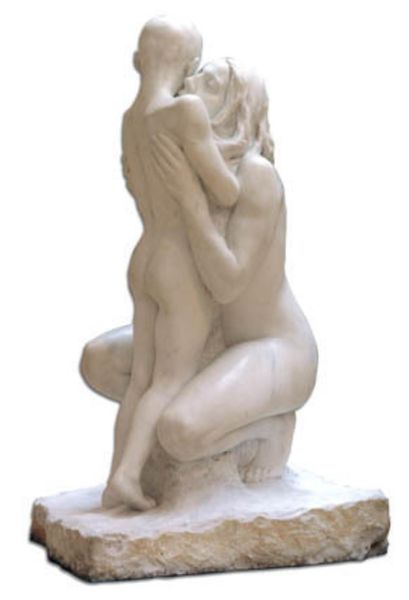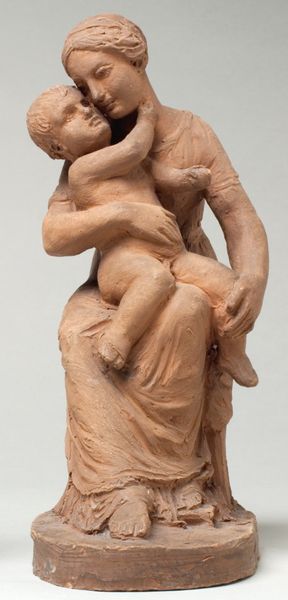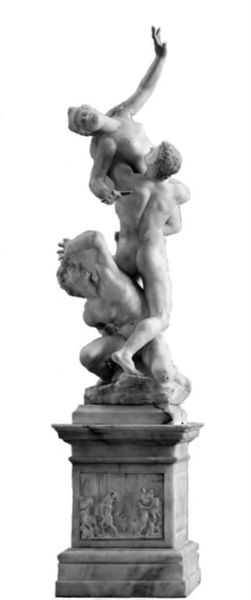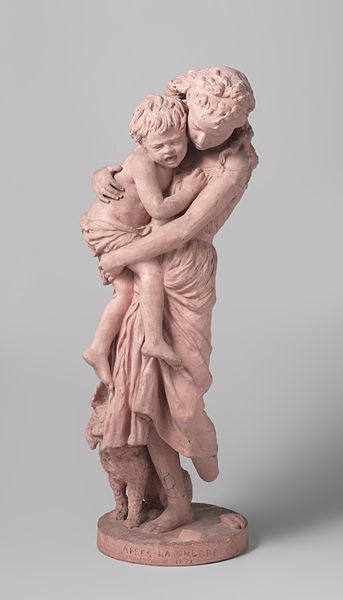
Dimensions: object: 1359 x 635 x 610 mm
Copyright: CC-BY-NC-ND 4.0 DEED, Photo: Tate
Editor: We're looking at "The Springtide of Life" by William Robert Colton. The cool marble gives the figures a pristine feel, almost frozen in time. What compositional elements stand out to you? Curator: The artist’s manipulation of the marble surface is noteworthy. Notice how the texture varies, creating a contrast between the smoothness of the figures and the roughness of the base. Consider also the implied lines—the gaze and posture of the figures—and how they guide our eyes around the sculpture. Editor: So it's about how the marble itself contributes to the meaning, not just the figures depicted? Curator: Precisely. The cold, hard stone juxtaposes the softness and vulnerability of youth, provoking a deeper contemplation on the transient nature of beauty and innocence. Are these forms truly representational, or do they lean towards abstraction? Editor: I see it now, it's like the marble is almost another character! Curator: Indeed. Form and material coalesce to elevate this work beyond mere representation.
Comments
tate 8 months ago
⋮
http://www.tate.org.uk/art/artworks/colton-the-springtide-of-life-n01928
Join the conversation
Join millions of artists and users on Artera today and experience the ultimate creative platform.
tate 8 months ago
⋮
As a sculptor, Colton specialised in representations of female nudes, lovers and children. The finely-cut marble is used here to convey the pure essence of childhood. It also introduces a note of fancy with the figures resting on water, an idea which might have been suggested by Charles Kingsley’s novel The Waterbabies of 1863. The unselfconscious postures of the children, especially the stance of the crouching boy, introduce a hint of realism into what is otherwise a subject of tender affection. Gallery label, August 2004
